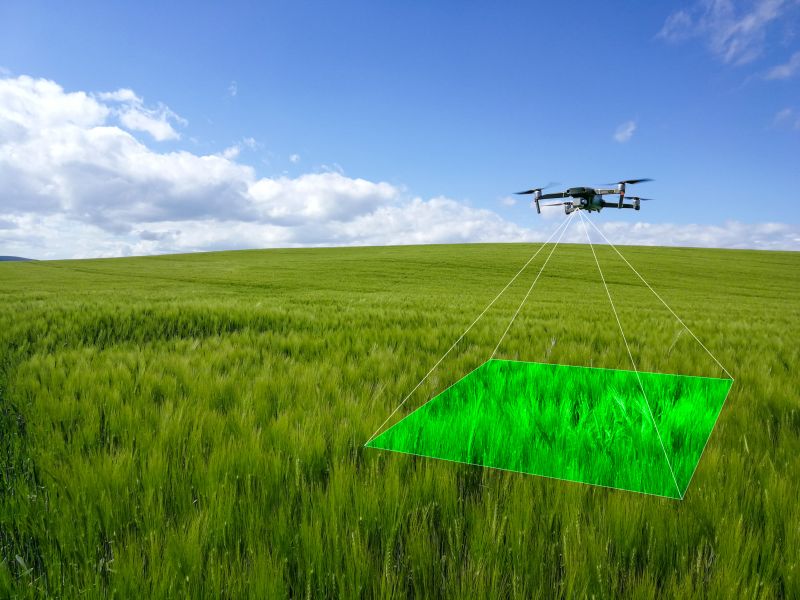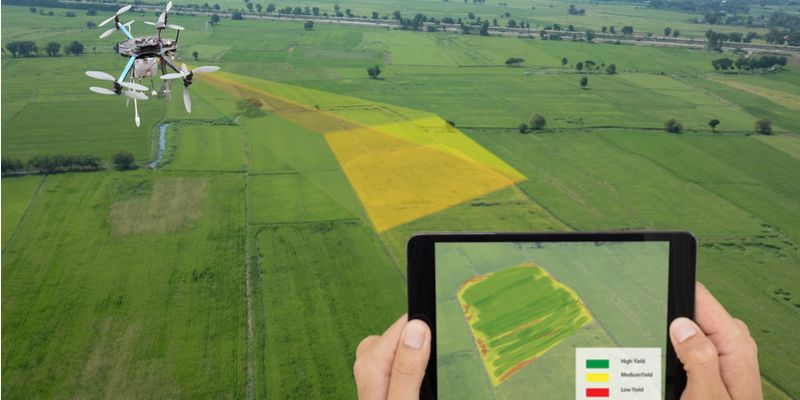How Drone Technology Is Bringing Environmental Benefits to Farms

A vast proportion of the earth’s land mass is farmland, and farming provides a livelihood for many. Geographically, environmentally, and economically, farming’s contribution to our society, culture and surroundings cannot be overstated. Inevitably, though, farming can have an impact on the environment, given the industry’s reliance on natural resources, and this is the source of much heated debate among environmentalists and the wider public. Whilst opponents of the farming sector might say otherwise, farmers generally are committed environmentalists and are constantly looking for best practice ideas to minimize any environmental issues. One area that is gaining a lot of attention in this regard is the use of drones within agriculture, with drone technology showing promising signs of making a real difference to the way the farming industry operates. The use of drones has been something of a revolution for many in the farming industry, and it is rapidly changing the way farmers operate, across all types of farm. Whilst an investment in high-end drone equipment may be expensive, the opportunities for cost savings and environmental improvements make it a serious proposition. Rather than using tractors and quad bikes, which use petrol and produce harmful emissions, farmers are turning to drones, which use clean electricity. Such pinpoint analysis of crops means that farmers are able to determine precisely what their crops need in terms of fertilizer, herbicides or pesticides, and to only apply chemicals in the quantities actually needed. Overapplication of chemicals quickly becomes a thing of the past, and crop yields are improved, giving further environmental and economic benefits.

Drones aren’t just limited to aerial surveying within agriculture. Drone technology has progressed hugely in recent times, and drones are now capable of actually spraying crops. Again, the precision with which drones can be directed means that chemicals can be laser-targeted to the specific part of a field that needs treating, reducing chemical application to the absolute minimum. Since pollution caused by run-off from farmland is a real problem within agriculture, this precision application of chemicals is a welcome move. Drones also have an advantage over manned vehicles in areas of the world where the terrain, or even disease, makes it difficult to go to. The possibilities for actually treating animals in the field, direct from a drone, are already being explored, and it seems only a matter of time before routine treatments can be administered to livestock in this way. Drones give operators an amazingly precise and in-depth analytical tool, with the ability to go anywhere, regardless of terrain or environmental constraints, and all within a matter of minutes. The depth of analysis that can be achieved using drones is enabling farmers to identify exactly which parts of their farms are healthy, spotting problems at the earliest possible stage and sometimes even pre-empting issues entirely. The environmental benefits of this are obvious, and it is even hoped that drones will enable the farming industry to minimize the chances of major issues occurring, from diseases like foot and mouth, to massive crop failures or serious pollution incidents. Farming may not always be seen as a technology innovator, but when it comes to drones, the industry is very definitely leading the field..

The importance of agriculture to India needs no mention. Although not the number one revenue generator for the country but more people in India depend on agriculture than any other sectors. The uniqueness of the region lies in agriculture being more than just a profession, it provides sustenance and livelihood, and is entwined with social and cultural beliefs. Ironically, agriculture has seen the least modernization in India than any other sector. There are many aspects that can be modernized in India and be up to date with the rest of world such as mechanization, postharvest, logistics but everything starts with a better seed. Innovation is more important in modern agriculture than ever before. The industry as a whole is facing huge challenges, from rising costs of supplies, a shortage of labor, and changes in consumer preferences for transparency and sustainability. There is increasing recognition from agriculture corporations that solutions are needed for these challenges. Major technology innovations in the space have focused around areas such as indoor vertical farming, automation and robotics, livestock technology, modern greenhouse practices, precision agriculture.


